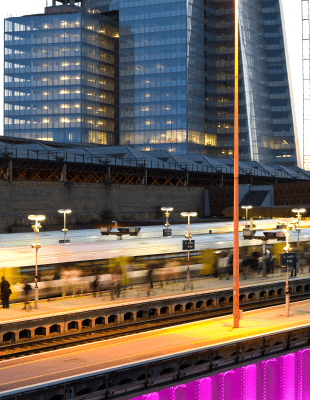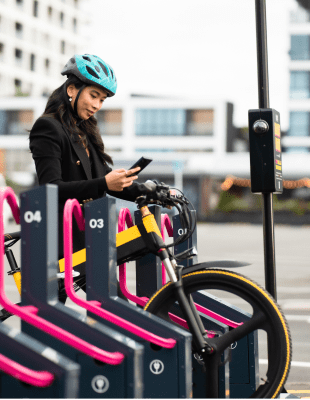At the 2023 AITPM National Conference, I delivered a presentation on the much used, but seldom challenged, value of time. The presentation formed part of the Transport Modelling workshop and it sought to challenge the longstanding methods used to capture travel time savings, often the largest contributor to project benefits in a transport economic appraisal.
Where does the value of time come from?
The parameter used to value travel time savings in Australia comes from a 1997 paper published by Austroads which established a benchmark for the value of private travel time in Australia as 40% of full time average weekly earnings (seasonally adjusted). Since 1997, this value has simply been escalated based on growth in average weekly earnings, and currently sits at around $19 per person, per hour ($Sept 2023). It has remained a constant flat rate i.e., applied equally regardless of the quantum of travel time savings. For instance, $19 per person per hour implies that we should value travel time savings of one minute at 32c, or savings of 90 minutes at $29 and so on.
Over two decades have passed with no evolution in the how we value time.so we thought it was It’s time to stress test this methodology.
Can you spot the difference?
To explore the implications of this standard, three hypothetical scenarios are considered in which the travel time savings would be valued equally under current guidance:
1. A remote town where there are limited alternative transportation options. It is highly car dependent and has limited social infrastructure. There are key ‘lifeline routes’ in and out of the town – the closure of these limited number of routes would result in inability for residents to access essential services. As a result, there are huge savings available from a new transport infrastructure but a limited number of users– four hours of journey time savings for 1,000 people.
2. A regional town with some alternative transport options. This region is served by public transport but is still relatively car dependent. With more ways to travel and better baseline access than a remote town, there are moderate travel time savings available from new transport infrastructure relative to the remote town, however more people benefit, say – 40 minutes of journey time savings for 6,000 people.
3. Finally, a high-density CBD where highly substitutable transportation options are readily available, including a range of public and private transport options providing access to social infrastructure and economic opportunity. While the marginal impact of new transport infrastructure on travel time savings will be small relative to the remote and regional towns, the impact will be experienced across many people resulting in one minute journey time savings across 240,000 people.

These scenarios help to stress test our intuitions about the constant unit rate application of the value of travel time. Does this matter in practice?
Most projects purport travel time savings
Travel time savings are highly influential in the evaluation of transport infrastructure. The chart below helps to demonstrate this. It shows the proportion of travel time saving benefits in business cases evaluated by Infrastructure Australia since 2017 as a percentage of total benefits claimed by the projects’ proponents. While there is variation across the projects, travel time savings accounted for over half of the benefits put forward for most of the projects. The quantum of travel time savings also exhibits variability, with examples highlighted ranging from savings of 2.5 minutes on average to up to 20 minutes of savings. However, the quantum of savings do not appear to be neatly correlated with the proportion of total benefits made up by travel time savings.

Recommendations
To address these issues, we have identified a couple of options are proposed to revise the way we value time.
1. Learn from existing guidelines on the treatment of wider economic benefits (WEBs)
The current Australian Transport Assessment and Planning (ATAP)[1] guidance for the calculation of WEBs to support project appraisals requires estimates of WEBs to be justified by a narrative that describes how each type of estimated WEB arises. This serves as a common sense test for the reasonableness of the claim that a proposal will generate WEBs of the size estimated.[2] By applying this approach to travel time savings and explaining how the benefits would be realised, adds a layer of credibility to the travel time savings applied. This would encourage proponents to think critically about the outcomes from their project and apply a reasonableness test.
In particular, it is suggested that commentary or evidence be provided with respect to:
a. Project objectives: Travel time savings do not always directly relate to the project. For example, road user travel time savings often help make the economic case for public transport projects. The indirect benefit of travel time savings on the road due to decongestion are captured in the benefits quantified for public transport projects. However it may be the case that a large number of vehicles are receiving a very small benefit. These nuances are not always addressed in cost benefit analyses. We could be more explicit about whether the benefit directly relates to the transport infrastructure proposed.
b. How will they be enjoyed and by who: Reasonable commentary on how travel time savings might be enjoyed by users that they accrue to and how will the travel time savings be distributed among key user groups.
2. Consider valuing alternate levels of travel time savings differently
In assessing the value of travel time savings, it is essential to recognise that not all time saved holds equal significance.
Consider a one minute journey time savings on the average commute time of a Melbournian of (approximately) one hour. Is the saving likely to be valued in any tangible way? More likely, such variations in travel time occur within the ranges of day-to-day variability of commute trips, or are otherwise imperceptible, given the length of the overall journey. Only after some threshold of travel time saving are reached, will savings genuinely impact the utility of transport users, and should be valued. The same can be said for the mirror of small travel time savings – small travel time dissavings. This is particularly relevant as we work to shape a connected and sustainable transport system. For example, infrastructure used to accommodate more active and public transport (e.g., bike and bus lanes), may create travel time dissavings for road users. Such dissavings are certainly not irrelevant, however, we should be critical of overvaluing minor dissavings over many travellers, where these ostensibly erode the positive value of critical active and public transport infrastructure.
Additionally, small changes in average travel times can mask more substantial changes in travel time reliability. Travellers are more likely to recall significant, excess delays they experience throughout the year on their journey’s relative to average journey times. Consider that that one minute average journey time savings, also reflected a more reliable journey pattern throughout the year for commuters, with journey time variability reducing from 20 minutes to 10 minutes. This change is likely to be perceived tangibly and positively by travellers. Hence, where only small average travel time savings are available through policy or infrastructure provision – for example, where only short trips in dense city areas are affected – perhaps a renewed focus on valuing reliability benefits is warranted, over travel time savings.
3. Review the value of time
It is important not to miss the wood for the trees, we need to take a step back and review how time is valued more broadly.
The journey is (sometimes) the destination: Travel is always thought of as a derived demand, i.e. demand for travel is due to the need to arrive at a destination in order to enjoy an activity once arrived. However, the idea that travel is a ‘pure cost’ does not reflect the diversity of travel behaviours. Think about a road trip that many people make on a holiday, such as the Great Ocean Road or the Outback Highway. Individuals routinely choose to pursue scenic, long distance routes over shorter or faster alternatives. Looking forward, as autonomous vehicle technology advances, with hands and minds free to enjoy the journey, our designation of travel as a cost only is likely to unravel even more.
Shifting the underlying cost function: More fundamentally, the dominance of travel time savings in appraisal, is in part a product of our traffic models, where the primary underlying cost function aiming to be optimised is something like ‘congestion’, predominantly emphasising the importance of mobility and movement impacts. It is important to understand that this is a specific way to think about the deployment of infrastructure onto our public space, but not the only one. Typically, this way of modelling (and implicitly, this way of thinking) results in the building out of roads in public space to optimise the journey times of cars. As society, its values, and its mobility context evolves, alternative cost functions may be useful. For example, a traffic model that optimises for the level of emissions produced by a given initiative. This may not provide the best behavioral predictions, but would serve as a useful complement to traditional modelling, better allowing us to holistically capture the effect of our travel, so that we may not need to grip so tightly to our reliance on large aggregate travel time savings.
There is a critical need to reevaluate and revise the value of time in transport economic appraisal. The stagnant methodology, rooted in a 1997 Austroads paper, fails to adapt to the evolving landscape of transportation needs and preferences. The scenarios presented underscore the limitations in applying a constant rate to travel time savings, while dominance of travel time savings in project evaluations, as highlighted by Infrastructure Australia data, highlights the urgency of revisiting our valuation methods. The proposed recommendations offer a framework for a necessary paradigm shift. By adopting these recommendations, we can ensure a more accurate and equitable representation of the true value that travel time savings bring to diverse communities and transport scenarios.
Footnotes:
[1] https://www.atap.gov.au/sites/default/files/documents/atap-t3-webs-final-2023-01-20.pdf
[2] Infrastructure Australia Assessment Framework (2021), “Guide to Economic Appraisal”.





